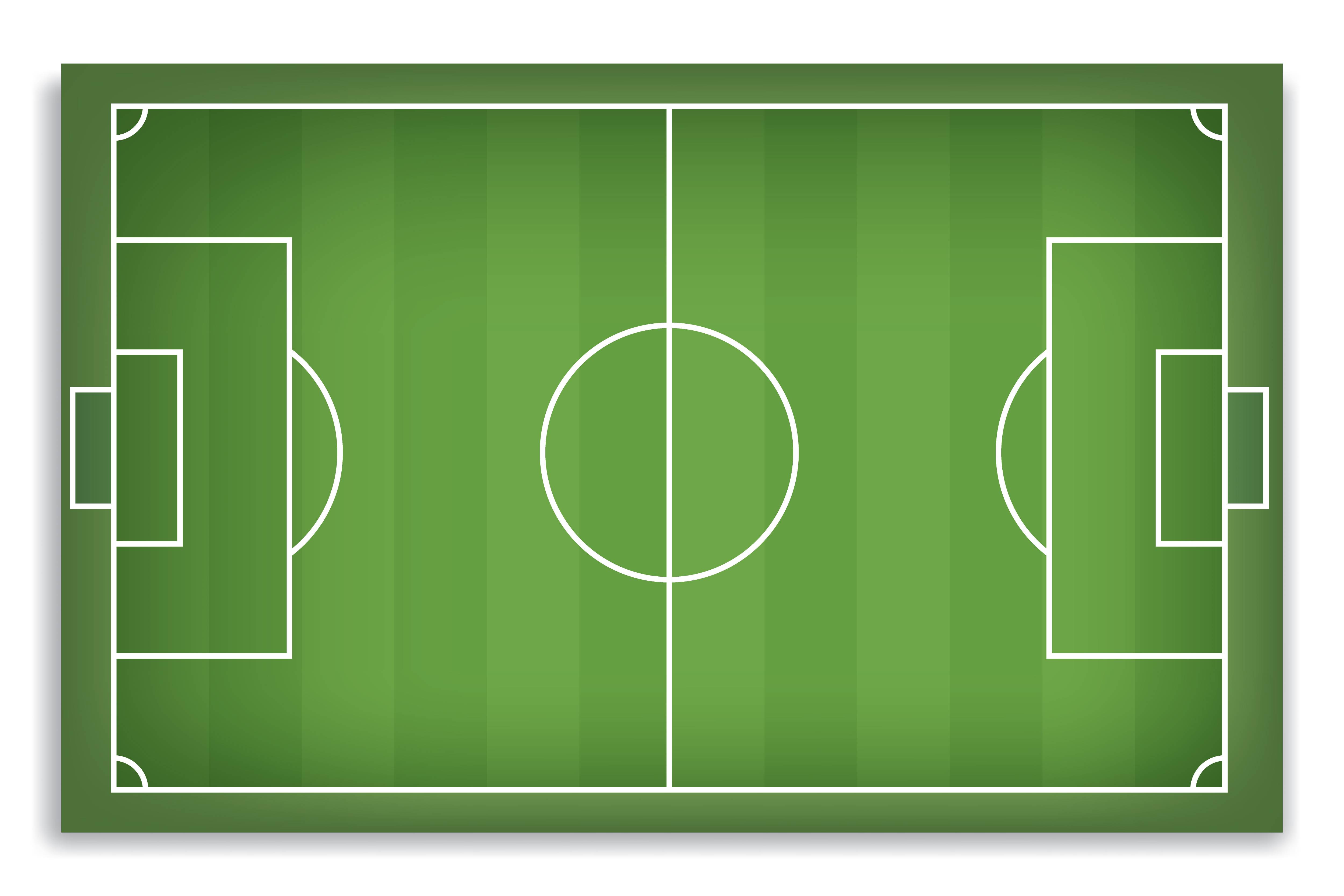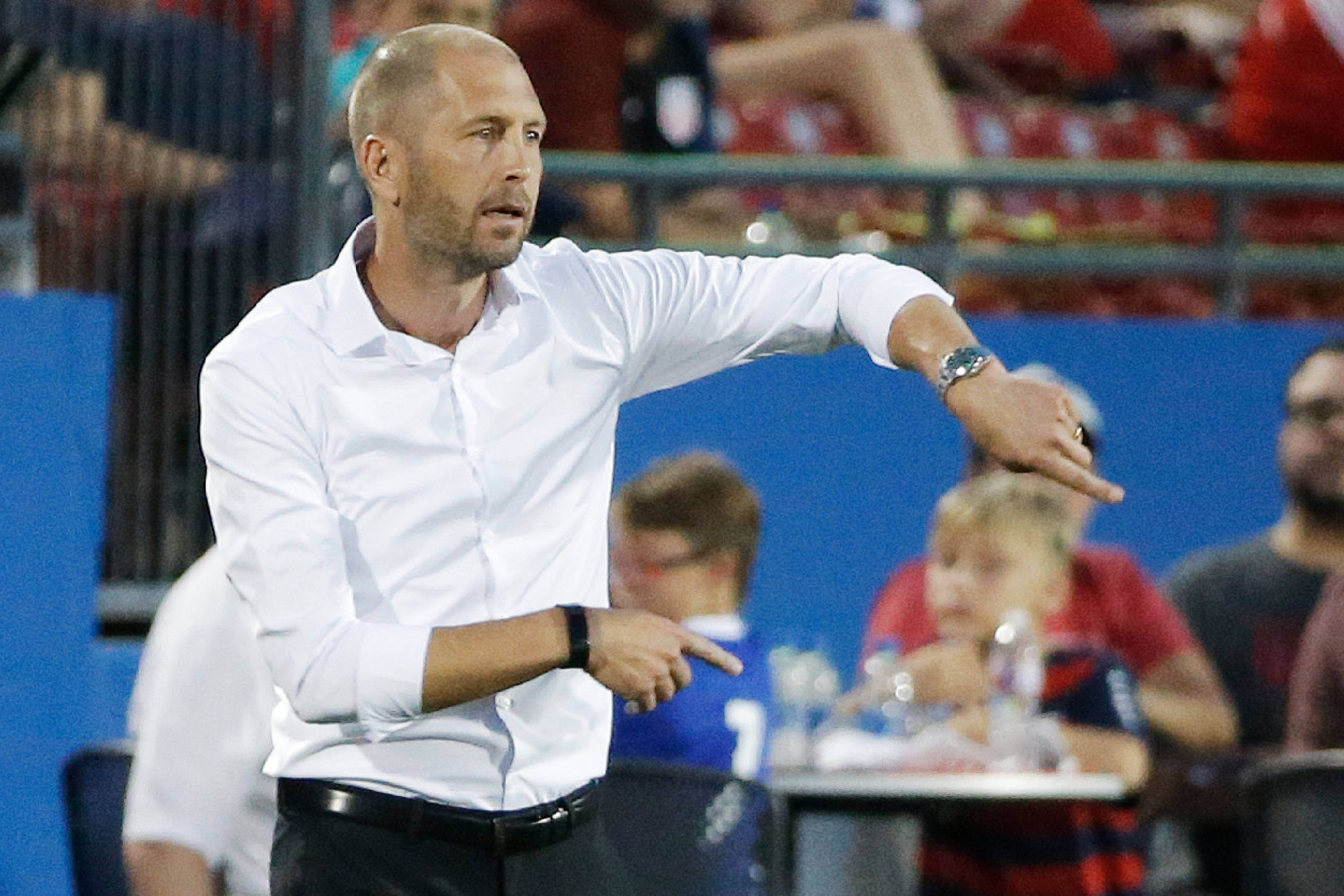Adjective Clauses
Exercise 1:
Instructions: match the definition to the pictures
- Person 1:
- A person who wears a distinctive armband and leads the team on the field.
- Person 2:
- A person who stands on the sideline and makes strategic decisions during the game.
- Thing 1:
- An object that is typically made of leather or synthetic materials and is used for scoring goals.
- Thing 2:
- Objects which are placed at either end of the field and are used to score goals.
- Place 1:
- A location on the field marked by lines, where the game is played.
- Place 2:
- A rectangular area in front of the goal, where certain fouls result in penalty kicks.






Answers:
- Person 1:
- A person who wears a distinctive armband and leads the team on the field. Anwers: Definition: Team Captain
- Person 2:
- A person who stands on the sideline and makes strategic decisions during the game. Answer: Definition: Head Coach
- Thing 1:
- An object that is typically made of leather or synthetic materials and is used for scoring goals. Answer: Soccer Ball
- Thing 2:
- Objects that are placed at either end of the field and are used to score goals. Answer: Goalposts
- Place 1:
- A location on the field marked by lines, where the game is played. Answer: Pitch/Field
- Place 2:
- A rectangular area in front of the goal, where certain fouls result in penalty kicks. Answer: Penalty Area
Adjective Clauses
An adjective clause, also known as a relative clause, is a group of words that functions as an adjective within a sentence. Its primary purpose is to modify or describe a noun (or pronoun), providing additional information about it. Adjective clauses are introduced by relative pronouns (such as “who,” “which,” “whose,” “whom,” or “that”) or relative adverbs (such as “where,” “when,” or “why”).
Here are some key characteristics of adjective clauses:
1. Adjective Clauses Describe Things and People:
Adjective clauses help you describe things (like soccer balls) or people (like players) more clearly.
Example:
“The soccer ball that I kicked was old.”
“The player who scored the winning goal is my friend.”
2. Start with “Who,” “Which,” or “That”:
To make an adjective clause, begin with words like “who,” “which,” or “that.” These words connect the extra information to the noun.
Example:
“The book that I love is on the shelf.”
“The soccer field where we practice is nearby.”
3. Give Important Details:
Adjective clauses provide important details about the noun. Without them, the sentence might not make sense or could be confusing.
Examples:
The movie that we watched last night was exciting. (The clause tells us which movie.)
The house where I grew up is very big. (The clause tells us where.)
4. Sometimes Use Commas for Extra Information:
When the information is extra, not essential, use commas around the adjective clause.
Example:
“My friend, who is a soccer coach, loves the sport.”
5. Works for People, Things, and Places:
Adjective clauses can describe people, things, or places. They add more details no matter what’s being talked about.
Example:
“The city where I was born is in Europe.” (Describing a place.)
“The player who scored the goal is my brother.” (Describing a person.)
Adjective clauses are a powerful tool in English grammar as they allow for the elaboration of ideas and provide more detail about the subjects of sentences. They are commonly used in both written and spoken English to make sentences more informative and interesting.
Who
Goalkeeper
The goalkeeper, who is positioned in the goal area, is responsible for stopping shots on target and preventing goals.
Defender
Defenders, who form the team’s backline, are tasked with blocking opposing players’ advances and protecting the goalkeeper.
Center-Back
Center-backs, who are positioned centrally in the defense, play a key role in intercepting passes and maintaining defensive solidity.
Full-Back
Full-backs, who are positioned on the flanks of the defense, provide support in both defensive and offensive situations.
Winger
Wingers, who operate on the wings, are known for their speed and crossing ability, which helps create scoring opportunities for the team.
Midfielder
Midfielders, who control the center of the field, are responsible for distributing passes and maintaining possession.
Central Midfielder
Central midfielders, who dominate the middle of the pitch, dictate the tempo of the game with their passing and ball control.
Defensive Midfielder
Defensive midfielders, who sit in front of the defense, act as a shield by intercepting passes and breaking up the opponent’s attacks.
Attacking Midfielder
Attacking midfielders, who play behind the strikers, are creative playmakers responsible for creating goal-scoring opportunities.
Striker
Strikers, who are positioned in the opponent’s half, have the primary role of scoring goals for the team.
Forward
Forwards, who typically play in advanced positions, contribute both in scoring goals and supporting the attack.
Second Striker
Second strikers, who play just behind the main striker, provide support by scoring goals and creating goal-scoring chances.
WHO 2
- Referee
- The referee, who wears a distinctive uniform, is the central authority on the field, responsible for enforcing the rules and ensuring fair play.
- Assistant Referees
- Assistant referees, who run along the touchlines, assist the main referee in making offside and out-of-bounds decisions.
- Fourth Official
- The fourth official, who stands at the sideline, assists with substitutions and manages the technical area, ensuring that coaches and substitutes behave appropriately.
- Match Commissioner
- The match commissioner, who oversees the logistical aspects of the match, ensures that the game is conducted smoothly and according to regulations.
- Ball Boys/Girls
- Ball boys/girls, who are positioned around the field, provide quick access to soccer balls, helping maintain the pace of the game.
- Stadium Announcer
- The stadium announcer, who is usually in the press box, informs spectators about important announcements, such as goal scorers and substitutions.
- Medical Team
- The medical team, who are on standby near the field, are ready to provide immediate assistance to injured players.
- Security Personnel
- Security personnel, who maintain order in the stadium, ensure the safety of players and fans during the match.
- Groundskeepers
- Groundskeepers, who prepare and maintain the field, work diligently to ensure the playing surface is in optimal condition.
Who 3
- Team Captain
- The team captain, who wears an armband, is a player chosen to lead the team. They represent their team in discussions with the match officials and serve as a role model for teammates.
- Head Coach
- The head coach, who typically stands on the sideline, is responsible for developing the team’s strategy, making tactical decisions during the game, and giving instructions to players.
- Assistant Coach
- The assistant coach, who supports the head coach, assists in training, player development, and providing input on tactical decisions.
- Goalkeeping Coach
- The goalkeeping coach, who specializes in training goalkeepers, works on the techniques and skills of the team’s goalkeepers.
- Physiotherapist
- The physiotherapist, who is part of the team’s medical staff, attends to player injuries and helps with player recovery and fitness.
- Team Doctor
- The team doctor, who is also part of the medical staff, assesses and treats players’ injuries and provides medical guidance to the coaching staff.
- Performance Analyst
- The performance analyst, who observes the game from the stands, uses technology to analyze the team’s performance and provide valuable insights to the coaching staff.
- Team Owner/President
- The team owner or president, who may watch the game from the VIP area, is responsible for the overall management and financial decisions of the team.
Where and Which
- Goalposts
- The goalposts, which are typically made of metal or wood, are positioned at either end of the field. They are where players aim to score goals.
- Corner Flags
- Corner flags, which mark the corners of the field, are used to indicate where corner kicks are taken.
- Soccer Ball
- The soccer ball, which is made of leather or synthetic materials, is the essential object that players use to score goals.
- Pitch/Field
- The pitch or field, where the match takes place, is typically a rectangular area marked with lines. It is where players compete.
- Sideline
- The sideline, where the boundary lines are located, is where the match is played from one side to the other.
- Goal Area
- The goal area, which is a smaller box within the penalty area, is where the goalkeeper has special privileges, such as handling the ball.
- Penalty Area
- The penalty area, which is a larger box in front of the goal, is where certain fouls result in penalty kicks.
- Center Circle
- The center circle, which is located at the midpoint of the field, is where the game begins with the kickoff.
- Substitution Bench
- The substitution bench, where players and coaches sit, is where substitutions are made during the match.
- Technical Area
- The technical area, where the coaching staff stands, is where coaches can give instructions to players during the game.
- Stadium
- The stadium, where fans gather to watch the match, is where the atmosphere and excitement of the game come alive.
- Locker Room
- The locker room, where players prepare and change into their kits, is where teams gather before and after the match.
- Scoreboard
- The scoreboard, which displays the match score and time, is where fans can track the game’s progress.
- First Aid Station
- The first aid station, where medical personnel are stationed, is where injured players receive immediate attention.
WHOSE
- The goalkeeper whose incredible reflexes saved numerous shots is a vital asset to the team.
- The team whose last-minute equalizer stunned the opposing fans celebrated their dramatic comeback.
- The stadium whose seating capacity exceeds 80,000 spectators hosts the biggest matches in the league.
- The striker whose speed and agility make him unstoppable is the top goal scorer of the season.
- The tournament whose rich history dates back to the 19th century is considered one of the oldest in the world.
- The captain whose leadership on and off the field inspires the team was awarded the Sportsmanship Trophy.
- The referee whose decisions were questioned by both teams faced criticism after the controversial match.
- The fans whose unwavering support can be heard echoing throughout the stadium never miss a home game.
- The coach whose dedication to player development has produced a generation of talented young athletes received a coaching award.
- The club whose colors are blue and white is known for its fierce rivalry with the neighboring team.
WHOM
- The referee, whom the players approached to discuss the controversial call, explained the decision.
- The midfielder, whom the coach often assigns as team captain, is a natural leader on the field.
- The rival team, whom we faced in last year’s epic showdown, is known for their strong defense.
- The goalkeeper, whom the fans affectionately call the “Wall,” made a series of incredible saves.
- The player, whom the opposing team tried to sign in the transfer window, chose to stay with our club.
- The stadium, whom thousands of supporters fill for every home game, has an electric atmosphere.
- The winger, whom the coach substituted in during the second half, completely changed the game’s dynamics.
- The captain, whom the team looks up to for guidance, gave an inspiring halftime speech.
- The coach, whom we hired last season, brought a new style of play to the team.
- The fans, whom the players appreciate for their unwavering support, are the heart and soul of the club.
When
- The stadium, when it’s filled to capacity, creates an electric atmosphere that inspires the players.
- The player, when on a breakaway, demonstrated remarkable speed and precision to score the goal.
- The team, when facing tough opponents, tends to play with greater determination and focus.
- The coach, when under pressure, remains calm and strategic in decision-making.
- The match, when it went into overtime, became a nail-biting thriller for the fans.
- The goalkeeper, when in a one-on-one situation, is known for making crucial saves.
- The season, when injuries plagued the squad, tested the team’s depth and resilience.
- The tournament, when hosted in our city, brought international attention to our soccer culture.
- The fans, when their team scores, erupt into cheers and celebrations.
- The player, when wearing the captain’s armband, takes on a leadership role both on and off the field.
Why
- The question why the referee awarded a penalty remained a topic of debate after the match.
- The mystery why the team’s star player didn’t start the game was finally revealed in the post-match interview.
- The conditions why the match had to be temporarily stopped were unfavorable weather and heavy rain.
- The dilemma why the coach had to choose between two equally talented goalkeepers was a tough one to resolve.
- The explanation why the away team struggled to adapt to the home stadium’s dimensions was lack of familiarity.
- The situation why the striker celebrated by doing a somersault was pure excitement after scoring a crucial goal.
- The reason why the fans cheered loudly throughout the match was their unwavering support for the team.
- The factor why the team’s performance improved dramatically in the second half was effective halftime adjustments.
- The concern why the club invested in youth development programs was to nurture future talent.
- The circumstances why the match was delayed for an hour included a pitch inspection and safety concerns.
Exercise: Fill in the Blanks with
“Who,” “Where,” “Which” “When” or “Whose”
- The player _______ scored the winning goal is our team captain.
- The stadium _______ hosted the final match was full of excited fans.
- The coach _______ guided us to victory last season is highly respected.
- The ball _______ the striker kicked went straight into the goal.
- The moment _______ we celebrated our championship win was unforgettable.
- The stadium _______ we played our last game can hold over 50,000 spectators.
- The midfielder _______ consistently delivers excellent performances is a team favorite.
- The match _______ we watched on TV last night had some thrilling moments.
- The defender _______ intercepted the pass received praise from the coach.
- The team _______ practices diligently is likely to improve their performance.
- The goalkeeper _______ made that incredible save is considered a hero.
- The trophy _______ they awarded to the winning team was stunning.
- The city _______ hosted the World Cup in 2018 is in Russia.
- The coach _______ we admire the most emphasizes teamwork.
- The player _______ skills are unmatched is often called a legend.

